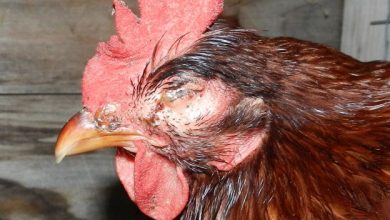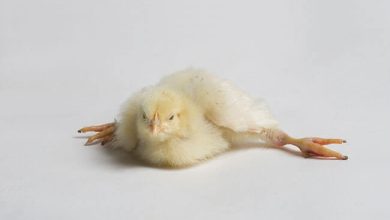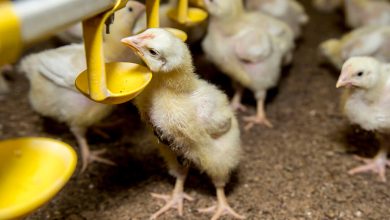EMU Farming-A Successful subsidiary occupation
Dr. Manoj Sharma , KVK, Kapurthala
Dr. A P S Dhaliwal , KVK, Bathinda
Dr.G.S.Dhillon, KVK, Bathinda
About one year back extremely few farmers in Punjab were aware about the existence of the emu bird. But in the past year, the scenario has changed very rapidly. A lot of farmers in Punjab are now actively seeking more information about the emu birds and many of them have ventured into the profitable business of emu farming. The Emu Farming business was established in India during the mid 1980’s, when a large stock of birds was imported from Texas. Emu birds are mainly reared for their meat, oil and leather. The Emu oil has been proven to have many medicinal qualities and is in a very high demand in the western countries. The emu meat contains very cholesterol. From emu feathers to emu eggshells, everything can be sold.
“Emu farming offers great scope and potential because of its supplementary income, additional employment and simplicity in operation” says the NABARD ‘model bankable project on emu farming ‘ ”. Moreover emu meat, emu leather and emu oil have established high quality product value in India.
Farmers in Punjab have now realized the huge profit potential this bird carries. The Emu bird being naturally immune to almost all diseases and being able to survive in almost any climatic condition, has led to the adoption of emu farming in all regions of Punjab.
International businesses are now headed towards India to take advantage of the untapped potential that emu farming holds in India and especially in Punjab, where it is a new concept.
Diversification is the key to success in any enterprise
We need to diversify to other species of poultry in order to reap more profits. Considering this there is Emu breed of bird which attains up to 65 Kg.wt. & 5.6 ft. height on Maturity. Emu belong to Ratite family of birds and is the third biggest bird species after Ostrich & Cassowary. The birds have small wings & are in capable of Flying. Australia is the place of Origin for the birds.
Emu is a social bird with dark whitish complexion. The birds live in groups & Can thrive under varying climatic conditions ranging 0 degree C. to 52 degree C. These Birds are Omnivorous and eat leaves, vegetables, fruits, insects, worms. They can be feed Modified poultry feed.
Emu is an exotic bird and it has not been included in any of the schedules of wildlife (protection) Act, 1972. The provisions of Wild Life Protection Act, 1972 and rules made there under are not applicable for these birds. As such no permission from forest Department is necessary for rearing, farming and selling of these birds.
In India, chicken is the most popular of the poultry species Followed by ducks & quails. Of late, with some popularization through Newspaper write ups, television coverage & Exhibitions, many Progressive farmers of Punjab state have started Emu farming with 25 to 200 pairs. To promote innovative project activity in the state this can accelerate capital Formation in the rural area. NABARD has taken a decision to formulate a Model project for rearing of Emu as there is a increasing demand for such unit in coming Years.
Present Status: Recognizing the economic importance, Australian Government in 1975 started domesticating these birds living in jungles by establishing big farms. This activity spread to America, France and other European countries in the early eighties. The activity has also spread to China, Japan, Malaysia and Korea. One Emu farm by name Vijaya Ratite Farm (Pvt.) Ltd. was established in Andhra Pradesh in 1996 on small scale.
Technical parameters of EMU Bird: The birds reach their full size by the end of 1st year. They grow up to 5.5 to 6 feet with a weight of 40 to 70 kg. Laying period in India starts after 18 to 24 months and Eggs are laid during September to February. Eggs are dark bluish green in colour with a weight of 450 to 700 gm. A bird can lay 20-60 eggs in a season. Incubation period is 50- 52 days and newly hatched bird will be of 6-7”in height. The lift span of the bird is 30-35 years. The productive economic life of the bird is 20.25 years.
Economic Importance
It is reported that the price of Rs.18, 000/- a pair of 3 months old birds and the price of Rs. 40, 000/- a pair of 15 months old birds having live body weight each 40 to 50 kg. and the birds are used for table purpose.
Meat
Meat of Emu bird is reddish in colour, soft and with less of cholesterol 98% fat free. Emu meat is lower in fat than Chicken. Turkey, Pork & Beef. It is the “Super Food of the New Millennium”. The price commands higher than that of meat from other birds/animal and is reported at Rs. 300-450 per Kg. The American Heart Association has included Emu meant in its listing of heart healthy meats.
Emu meat: 98% fat free – 100% Natural
| Emu | Chicken | Lean Pork | Lamb | |
| Fats (g) | 2.4 | 3.5 | 25.0 | 23.4gr |
| Protein (%) | 20.9 | 20.1 | 20.2 | 16.6 |
| Energy (ki) | 446.5 | 125.0 | 147.0 | —– |
| Calories | 106.2 | 125.0 | 147 | 282.0 |
| Iron(mg) | 3.0 | 1.0 | 1.0 | 1.55 |
| Cholesterol (mg) | 51.7 | 80.0 | 65.0 | 73 |
| EMU | CATFISH | CHICKEN | |
| Protein | 23.3G | 18.2G | 23.1G |
| Calories | 109 | 113 | 110 |
| Cholestrol | 57.5MG | 58MG | 64MG |
| Fat | 1.7G | 4.3G | 1.2G |
| Saturated fat | 0.06G | 1.0G | O.3G |
| Mono-unsaturated fat | 0.7G | 1.6G | 0.3G |
| Ploy-unsaturated fat | 0.4G | 1.0G | 0.3G |
Feathers: Feathers are soft non allergic / anti static, beautiful double quelled and are used in hats, dresses, computer and car cleaning brushes and household decorative items. About 400 to 600 gms of feathers would be available from a bird and each bird would fetch about Rs. 200/- at present.
Skin: The skin is very thin, soft and strong. Price of good quality skin is reported Rs.700/- to Rs.1000/- per sq ft. and 8-12 sq ft. of skin is available from a well matured bird. The skin is used in the preparations of shoes, bags, belts, purses, jerkins and seat covers for expensive cars. At present raw skin of a matured bird would fetch about Rs. 1000 1200/-.
Egg Shells and nails: The egg shells are used for painting and as decorative items due to deep blue colour. Nails are strong and decor able used in artificial ornaments and craft goods.
Oil: About 4-6 a litter of oil is available from a bird which is devoid of any colour taste and odor. At present market prices, the price of one litter refined Emu oil is Rs. 3000/- to Rs. 4000/- The oil is penetrating and is having moisturizing, analgesic, anti allergic and antiseptic properties. The oil is used in analgesic ointments, beauty creams and lotions, soaps, hair oils, shampoos, perfumes and massage oils. The raw fat/crude oil of Emu fetches Rs.1000 per Kg.
Clinical experience with Emu oil has shown that its two major benefits are its anti- inflammatory properties and its ability to penetrate the skin. It also appears to provide some solar protection. The penetrating effect appears to be related to its non-phosphorous composition. “Our skin is phosphor-lipid deficient. In other words, there is no phosphorous in our skin. If you put anything on your skin that has phosphorous in it, your skin is ‘programmed’ to keep it from penetrating. Anytime you put anything on your skin that is phospholipids deficient, or has no phosphorous, it penetrates right through “. Emu oil has been documented to exhibit the following properties and/or has been used for the following purposes:
- Anti – Inflammatory Activity
- Moisturizing
- Cholesterol Reducer
- Bacteriostatic
- Penetration Enhancer
- Significant epidermal proliferative activity
- Non – comedogenic
- Significant wound healing agent
- Appears to promote faster healing of burns with less pain and scarring
- Anti – Arthritic Activity
- Excellent Emulsifier
Eyes: The bird is able to see up to a distance of 10 meters and its eyes are being used to replace damages corneas in human beings.
Utility: Fifteen months old Emu broiler weighing 40 kg. slaughtered for oil, meat and skin etc. The utility is as under:-
| Utility | Present market price of produce per unit |
| 43% boneless meat | Rs. 300/- to Rs. 450/ Kg. |
| 14% bone meat | Rs. 200/ kg. |
| 5% feather & skin | Rs. 200 + Rs. 1000 |
| 22% fat | Rs. 1000 / kg (raw oil) |
| 3% leg skin | Rs. 500/- |
| 4% neck | Usable but not saleable at present. |
| 3% blood | Usable but not saleable at present. |
| 4% waste | Usable but not saleable at present. |
| About 96% useable bird Refined oil | Rs. 3000/- to Rs. 4000/- per litter |
Financial Assistance: Loan from banks with refinance facility from NABARD is available for establishing Emu farm. For obtaining bank loan, the farmer should apply to the nearest branch of a Commercial or Co- operative or Regional Rural Banks in their area in the prescribed forms which is available in the branches of financing banks. The project report should be attached/ enclosed with loan farm. For Emu farming schemes with very large outlays, detailed reports will have to be prepared. The technical officers attached to or the Branch Manager of the bank can help / give guidance to the farmers in preparing the project report to obtain bank loan. A scheme can also be prepared by the beneficiary after consulting local technical experts or private commercial Emu hatcheries. Consultancy Services of NABARD would also be available for large commercial projects.
Beneficiary: A good practical training for a week and experience on a Emu farm will be highly desirable before starting a farm. If possible, they should visit the progressive Emu farms/ Hatcheries in the area and discuss the technical ability and profitability of farming.
Backward linkages
Climate: Emu is a social bird and can thrive under varying climatic conditions ranging 0° F. to 100° F. The climate suitable for poultry farms is also suitable for Emu farming.
Availability of Feed: Poultry feed (layer) can also be fed to Emu. In addition to poultry feed mineral mixture and shell/ stone grit can be given. Sprouted Gram and Fenugreek can also be fed during layer season. During summer season chopped vegetables like cabbage, carrot, beetroot, etc. can also be fed.
Availability of Veterinary Aid: Like poultry, chlorinated water should be given to Emu birds. Deforming should be done twice in a year at an interval 6 months.
Training and Experience: Training on Emu farming is given by KVK as well as SAU/SVAU for 3-5 days. During training these farms supply all technical information.
Availability of Equipment: Water, feeders & egg trays are required. Low cost equipment locally available can also be used.
Lending Terms – General: Project Cost: One model of 50 pairs Emu have been formulated. The total project cost including fixed cost and recurring cost up to the income generating stage (21 months) has been worked out to Rs. 24.78 lakh.
Margin Money and Bank Loan: Minimum 15 % of down payment has been considered to be collected from the beneficiaries and maximum 85 % of total financial outlay is considered as bank loan.
TFO: Rs. 24.78 lakh, Margin Money: 15 %, Bank Loan: 85 %
Working Capital: If required by the farmer, financing bank may asses the same and sanction accordingly. It may require for commercial ventures only. Here in this case we have already capitalized 21 months recurring expenses and so there may not be a need for further W.C.
Interest Rate: The rate of interest shall be decided / fixed by the concerned financing bank to the ultimate beneficiary. In this case for calculation of cash flow and repayment we have assumed an interest rate @ 12% per annum.
Security:
- Will be as per RBI guidelines issued from time to time.
- Insurance: Bank may ensure that the borrower takes insurance of assets created out of a bank loan including insurance of Emu birds.
Repayment of Loan: The repayment period depend upon the gross surplus generated in the project. The loan will be repaid within 7 years including first year as grace / moratorium/gestation period in suitable monthly installments (6/year) during October to march only.
Conclusion: Emu farming offers great scope & potential because of its supplementary income additional employment & simplicity in operation. Efficient Emu development can be achieved by promotion of small units in villages through a gamut of functions like dissemination of information & technology, making various inputs & organizing training Sessions for farmers on this subject.
Bio-security measures to be taken in Emu Farming / breeding:
- The farm should be ideally placed and away from the population and is bio-secured.
- The housing should be proper will adequate brooding facilities.
- There should be a separate workers team, who should not be allowed to get mixedwith other workers.
- There should be separate dress code for the workers.
- Proper disinfection procedures / foot dips etc. should be maintained.
- The quarantine sheds should be separate and away from other sheds.
- The other birds (parent, commercial or pure line etc.) and pets should not bereared/allowed to enter the same farm.
- The brooding space should be optimum.
- There should be provision of showers, change over and dips.
- Proper records should maintain.
- There should be scientific facility for disposing off / destroying the bedding / deadBirds etc.
- The equipment are proper, properly disinfected and separate
- The farm should have a water sanitation system.
- Water source should be tested for mineral, bacterial, chemical, contamination andpathogen load.
- Proper storage of feed to prevent contamination should be made. The water qualityshould be checked periodically and if contamination is seen it should be treated with any sanitizer.
- Routine disease monitoring procedures like postmortem examination of dead birdsand periodic sera antibody assay is recommended.
Although this is new venture for our farmer’s but has great potential in the coming years. So take this opportunity and success in life by adopting this subsidiary occupations in agriculuture.




